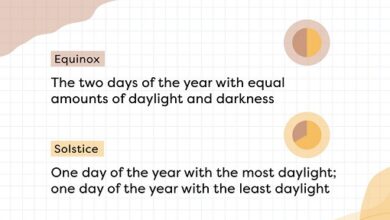Difference between magma and lava Similarities and FAQs
Magma and lava
In this article we will provide you the difference between magma and lava Similarities and FAQs so keep reading.
what does magma mean
Magma is a mixture of liquid and solids found inside the Earth. It is composed mainly of molten silicates, but also contains small amounts of dissolved gases. It originates at very great geological depths due to the heat generated by the nuclear decay of uranium and other radioactive elements in the Earth’s core. Magma can then rise to the surface during volcanic processes, where it is known as lava when it comes into contact with cold air or water. Many igneous rocks are formed by the solidification of magma or lava, a process that takes thousands or millions of years to complete.
what does lava mean
Lava is molten rock or magma that has formed from the melting of material, such as minerals and metals, within the Earth’s mantle. This is dumped on the surface during volcanic eruptions. In its liquid state it can be extremely hot (up to 1,200 degrees Celsius) and flow considerable distances from the crater down a volcano, taking with it everything in its path. As lava cools on contact with air or water, it forms striking volcanoes or lava flows made up of varying amounts of silica-rich silicates. These structures can have different shades depending on the minerals present: from gray to black through red and even green and blue if they contain certain iron oxides.
Similarities Between Magma and Lava
- Magma and lava are concepts related to geology.
- Both terms refer to molten material found below the Earth’s surface.
- Magma is a molten mass of minerals, gases, and other components formed within the Earth’s crust from heating by pressure or friction.
- Lava, for its part, is the result when magma leaves the internal body of the earth towards the surface through fractures in it; here it cools rapidly until it solidifies, giving rise to rocky materials known as volcanic lavas.
- In short, both words are closely related since magma is necessary to produce lava when it comes out from the depths upwards.
Differences between magma and lava
- magma and lavaare two terms related to the movement of materials on Earth.
- Magma is a mixture of molten rocks, minerals, and hot gases found in the Earth’s mantle below the continental crust.
- Lava is a flow resulting from the process in which magma comes out through the ground or volcanoes, releasing this molten material into the environment.
- These two words differ mainly by their location: magma is contained within the Earth while lava flows out under certain geological conditions.
- In summary, we can say that magma is an incandescent liquid existing within the Earth’s interior, while lava is a product resulting when fluids come to the surface, forming visible deposits from the outside.
Frequent questions
What is a magma?
Magma is a hot liquid composed mainly of molten silicates and gases that forms in the Earth’s mantle. It occurs when solid rock is heated to its melting point due to pressure or heat generated by tectonic movements. If the magma breaks through the earth’s surface, it can cause a volcano.
What is magma and lava?
Magma is a molten mixture of minerals and molten rocks found inside the Earth. Lava is boiling volcanic material spewed out by volcanoes during an eruption. When it comes to the surface, the magma is called lava.
What is magma and where does it come from?
Magma is a rocky liquid made up of molten minerals, gases, and air bubbles found inside the Earth. It comes from the Earth’s mantle, where high temperatures and pressures melt minerals. Magma flows up from the mantle through fractures in the Earth’s crust known as mid-ocean ridges.
Where is the magma found?
Magma is found in the interior of the Earth, approximately between 70 and 2,900 kilometers below the surface.
What is lava?
Lava is a molten rock that emerges from the interior of the Earth through volcanoes. When it leaves the volcano, the temperature of the lava can reach up to 1,200 °C (2,192 °F). Lava cools and solidifies on contact with air or water to form different rocks such as basalt, rhyolite, andesite, and obsidian.
What is lava and how is it formed?
Lava is a fluid mass of molten volcanic materials that is expelled to the outside through volcanoes. It is formed when magma, which is composed mainly of silicates and molten work of more than 300 skilled workers, of whom around 18,000 pieces of wrought iron and around two million rivets were employed. When finished, the 300 meter metal oxides, leaves the interior of the Earth through volcanoes. The heat generated in the process causes the magma to melt and reach extremely high temperatures (sometimes over 1,000°C), which causes it to flow to become lava.
What is magma and lava?
Magma is a mixture of molten rock and volatile gases found below the Earth’s surface. Lava is the fluid material that results when magma pours out through a volcanic crater or fractures in the earth.
What contains lava?
Lava contains a mixture of minerals, gases, and rock fragments. It is composed primarily of fused silicates, such as feldspar and olivine, along with variable amounts of iron, magnesium, calcium, and sodium. It also contains small amounts of other materials such as aluminum oxide (Al2O3), titanium (TiO2), and phosphorous (P2O5).




